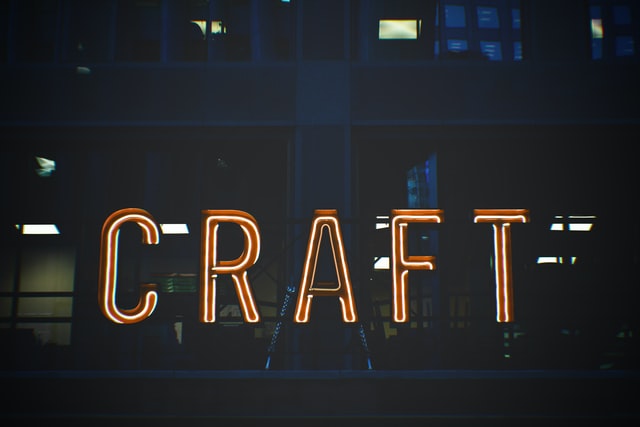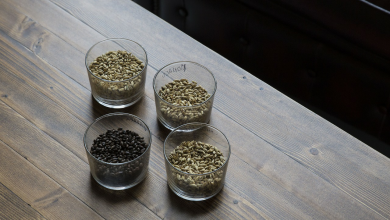What Is Craft Beer?

Craft beer has become synonymous with American breweries and within beer culture around the world. You have probably heard the term floated around bars, advertised on television, or even attached to the label of one of your favorite beers. But what is craft beer exactly? Let’s dive into what defines the beverage taking the world by storm.
Craft Beer Defined
Craft beer, as defined by the Brewer’s Association, is a term that loosely refers to beer made by small, independent, and traditional brewers. While this definition leaves the door open for many brewers to compete within this space, the term “craft beer” is widely argued as to its true definition due to the loosely outlined characteristics.
Craft Breweries
With so much being left to interpretation when defining craft beer, let’s focus instead on the established requirements of the craft breweries that make, sell, and distribute the beverage. As previously mentioned, craft brewers are required by the Brewer’s Association to be three things:
- Brewer – To be properly recognized, all craft brewers are required to have a government-issued TTB Brewer’s Notice.
- Independent – A non-craft brewer can own no more than 25% of the company stakes.
- Small – The brewer cannot produce more than six-million barrels of beer per year.
Furthermore, there are several shared characteristics common among craft brewers that are noted by the Brewer’s Association:
- Innovation – Craft brewers are known for setting themselves apart through unique and individual touches.
- Integrity – Due to the limited involvement and interest of non-craft brewers, craft brewers have the ability to stay independent and true to themselves without outside influence.
- Community – Craft brewers are often well-established within their communities through various events, sponsorships, and charities.
- Locality – When many people think “craft beer,” they think local. Coincidentally, it has been noted that craft brewers are often located within ten miles of most communities.
- Traditional – While craft beer brewers are known to place their own spins on the beverage, they still tend to abide by traditional beer-brewing ingredients.
- Connection – Instead of appealing to the broader audience, such as the large brewers usually do, craft brewers typically choose to appeal to a more local and defined audience.

Where Craft Beer Got Its Start
Beer itself has a long and winding history that dates back thousands of years ago, while craft beer has an extensive history that stretches all the way back to 1829, here in the U.S. with the start of Yuengling & Son in Pennsylvania. Since then, there have been a number of key moments that have helped define craft beer for what it is today. We have noted some of these moments below:
1860: Schell Brewing Company
The first U.S. craft brewer, Schell Brewing Company, opens in Minnesota.
1942: The Brewer’s Association of America
The Brewer’s Association of America is established as a way to help 200 breweries secure the supplies they need to continue their production efforts during WWII.
1965: Anchor Brewing Co.
The first craft brewery in California is opened, Anchor Brewing Co.
1977: Craft Beer In Books
The World Guide to Beers is written by Michael Jackson, which publishes pertinent information on craft beer within a prominent guide book.
1976: Pull Tab
In 1976, the pull-tab on beer cans gained popularity after being endorsed by the Brewers Association of America.
1979: Boulder Beer
Colorado, home of the Brewers Association, features its first craft brewer, Boulder Beer.
1981: Craft Brewery In New York
The establishment of William S. Newman Brewing Company marks the first craft brewery in New York.
1982: Great American Beer Festival
In 1982, the first Great American Beer Festival was held. During the festival, over 40 different beers were served and enjoyed.
1984: Introduction of Beer Canning
The “godfather of homebrewing” Charlie Papazian sets the precedent for craft brewers to utilize aluminum cans down the road.
1984: Craft Brewers Conference
In Boulder, Colorado the first ever Micro-Brewers Conference was held, later renamed the Craft Brewers Conference.
1996: 1,000 Brewery Benchmark Reached
By this time in 1996, there are now 1,000 craft breweries located within the United States.
1996: U.S. Craft Brewing Goes International
During the International Brewing and Cider Awards, New Glarus Brewing Company takes home the gold and establishes itself as the first internationally recognized American craft brewer.
1997: Brewpubs In All 50 States
Following legalization in Montana, all 50 U.S. states have now legalized brewpubs.
2005: A Merger
Two prominent brewery associations, The Brewers’ Association of America and the Association of Brewers, merge as one to form the Brewers Association.
2008: Belgian-Style Craft Brews
Due to a hop shortage in 2008, Belgian-style beers saw an increase in popularity with craft brewers in an attempt to make up for the loss.
2011: Macro Brewers Buy Into Craft Beer
In keeping with the rise in popularity of craft beer, larger companies begin purchasing smaller craft companies in an attempt to remain competitive within the ever-growing space.
2012: Craft Beer Defined
The Brewers Association outlines craft beer in their “Craft vs. Crafty” publication.
2016: 5,000 Craft Breweries
In 2016, craft breweries topped 5,000 in operation within the U.S.
2017: Craft Beer In the Smithsonian
In 2017, the Smithsonian features the history of brewing in the U.S. through their “American Brewing History Initiative.”
2018: Increase In Craft Breweries
By this time in 2018, there are now over 7,000 craft brewers established within the U.S.

The Difference Between Craft Beer and Micro Brews
Microbreweries and craft breweries are often confused with each other; however, the two brewery terms are actually quite distinct through production amounts. Microbreweries are legally defined by the amount of barrels they are allowed to produce per year; alternatively, craft breweries are not legally restricted in this way, but tend to produce barrels counts in the millions as opposed to the thousands.
What Are Nano Breweries?
The smallest category of beer producers are called nano breweries. There is not currently a set requirement for how much these breweries produce. Often, you will find that nano breweries stick to single-batch brewing, thus offering a truly unique beer drinking experience. You most likely will not be able to purchase beer produced by nano breweries unless you visit them locally, where you’ll often find them within the confines of restaurants and taprooms.
Why Some Drinkers Choose Craft Beer
Beer drinkers that opt for craft beer usually do so for specific reasons. After all, craft beer is not just a beverage preference; it delves even further and establishes itself as more of a lifestyle choice. Here are some of the most common reasons why beer drinkers choose craft:
- Small Business Support – Drinking craft beer gives consumers the unique opportunity to support local, small businesses, as opposed to the larger macro breweries.
- Uniqueness – Craft brewers carry a tradition of putting a unique spin on beer-brewing. The tastes and flavors often incorporated in craft beers are highly valued and appreciated by its drinkers.
- Quality and Care – With production on a smaller scale, many craft beer drinkers believe craft beer offers a more quality taste than larger beer brands.
Craft Confusion
With the expansion of craft beer brewing in the U.S. , many of the larger macro brewers have sought to get their piece of the pie by purchasing smaller craft brewers and continuing production under their umbrella corporations. Technically, this move negates the classification of a beer as “craft,” often leaving beer drinkers confused as to whether they are drinking craft beer or not. Here are some examples of craft breweries purchased by macro breweries currently in operation:
- Redhook, purchased by Anheuser-Busch
- Blue Moon, purchased by MillerCoors
- Lagunitas, purchased by Heineken
- Shock Top, purchased by Anheuser-Busch
- Elysium, purchased by Anheuser-Busch
- Goose Island, purchased by Anheuser-Busch
- Pyramid, purchase by North American Breweries
- Kona Brewing Company, purchased by Craft Brew Alliance
- Magic Hat, purchased by North American Breweries
- Leinenkugel, purchased by MillerCoors
The quality and taste of these beers of course is not defined by their ownership by a larger conglomerate; however, for those craft brew drinkers that choose their beer based on other factors previously mentioned, it can make a big difference.

Popular True Craft Beer
If you are looking for a true craft beer to enjoy, you can definitely take your pick of some amazing ones brewed right here in the U.S. and around the world. Some of the most popular and well-established craft beer brands include:
- Ithaca
- D.L. Geary Brewing
- Victory Brewing Company
- Oskar Blues Brewery
- Anchor Brewing Company
- Sierra Nevada Brewing Company
- Boston Beer Company
- D.G. Yuengling & Son, Inc.
- Duvel Moortgat
- New Belgium Brewing Company
- Goose Island Beer Company
- Russian River Brewing Company



